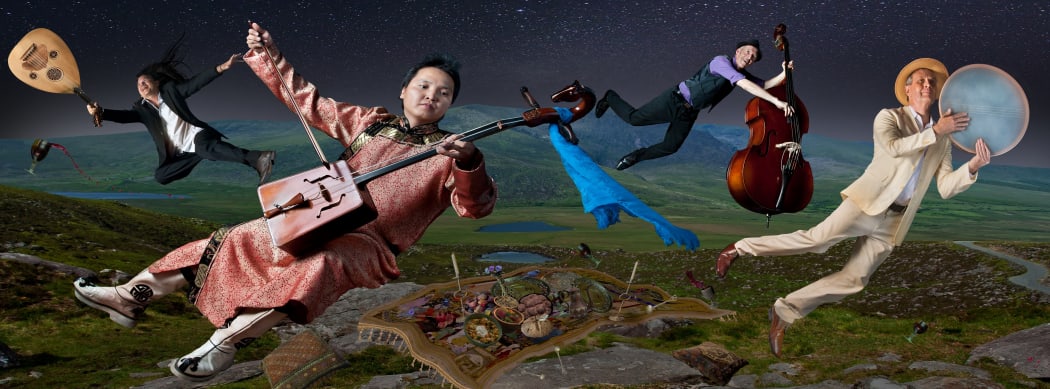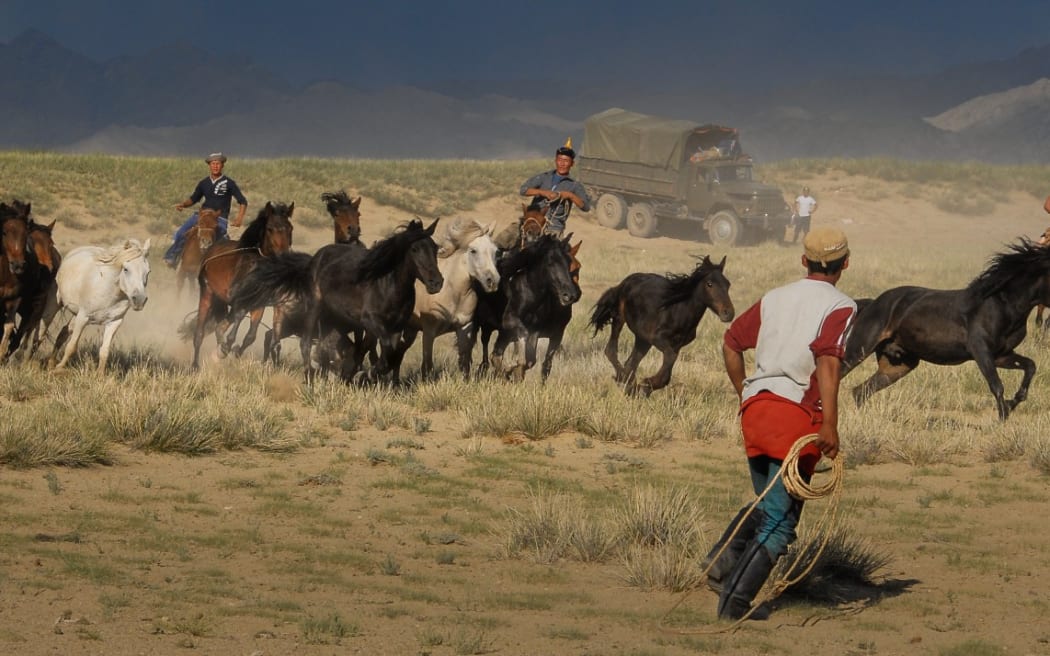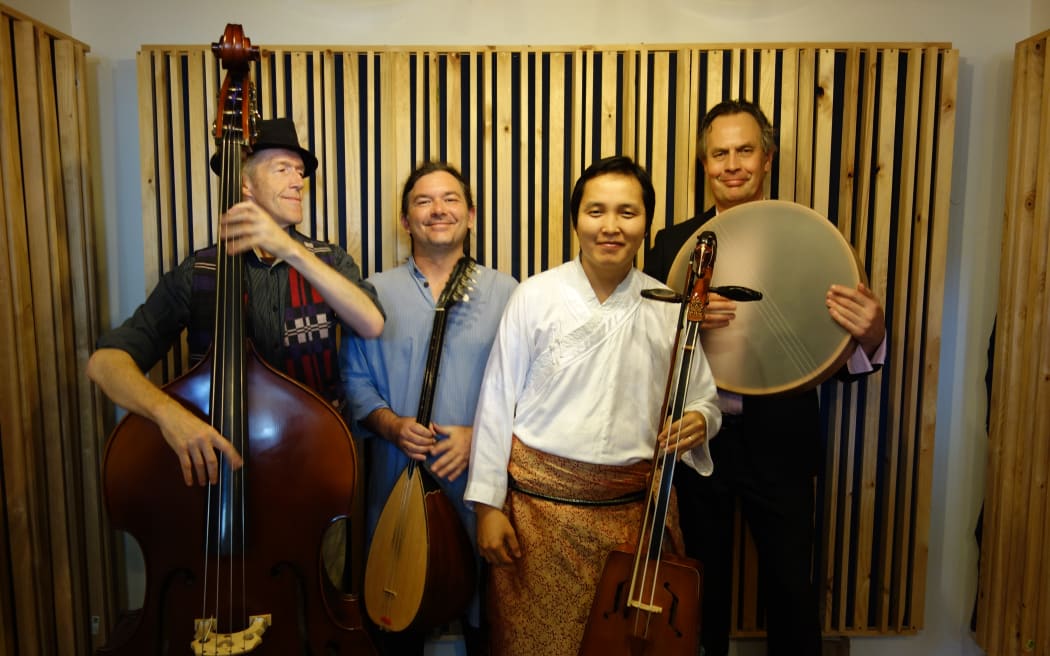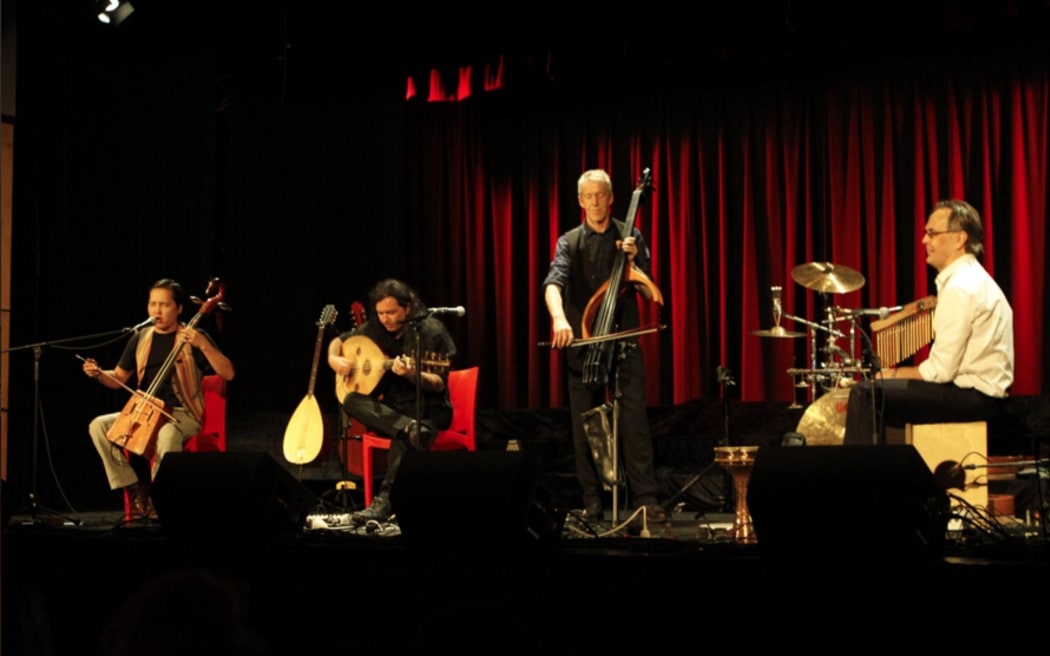
Australian folk fusion quartet Equus (l to r: John Robinson, Bukhchuluun Ganburged, Bertie McMahon, Peter Kennard) Photo: Supplied
Given what they often sing about, what some of their instruments look like and what some of them are even made of, it makes sense to call the band Equus.
The Australian fusion quartet combines jazz and Middle Eastern strings with Mongolian songs played on instruments made partly out of horses.
At its core is John Robinson (oud, Turkish baglama and saz player) and Bukhchuluun 'Bukhu' Ganburged, master of Mongolian throat song and the cello-like instrument, the morin khur.
The morin khur has a head shaped like a horse, while its bow and strings are made of horsehair.
When not performing their own material, you're likely to hear Equus singing popular Mongolian songs such as "Sixty White Horses".
As John Robinson explained to RNZ Concert host Bryan Crump, in traditional Mongolian lifestyle the human and the equine are entwined hand and hoof.

Some Mongolian horse action Photo: Creative commons
"They're just such an integral part of Mongolian nomadic life and there is a reverence that's really strong."

Australian folk fusion quartet Equus (l to r: Bertie McMahon, John Robinson, Bukhchuluun Ganburged, Peter Kennard) Photo: Supplied
New Zealanders will get a chance to hitch their saddles when Equus makes its WOMAD Taranaki debut next March.
Although they didn't know it, Robinson and Ganburged were set on a collision course when Robinson was a teenager. Listening to a world music show he was spellbound by the sound of a Mongolian throat singer. It became his goal to make music with one.
Meanwhile, Ganburged, a graduate of the Mongolian National Academy of Music and Dance, had decided to move to Australia.
The pair met at a folk festival in Queensland in 2011, began jamming in the green room, and the genesis of Equus was born.
Now all they needed was a rhythm section which they found in the form of jazz musicians Bertie McMahon (acoustic bass) and Peter Kennard (percussion).
But the real point of difference is Ganburged's throat singing.
For those not familiar with the style, the technique is based on singing a fundamental bass note – or drone – while manipulating the harmonics of the voice to create a semi-whistling sound that skilled practitioners can control to produce a melody. It's basically singing two notes at once.
Most of us can try this in the comfort of our own home by singing a constant tone (any note will do) then changing the vowel sound from A to E then I,O and U, and back again.
That's the basics, says Robinson. Years of practice and training later, and you've got a Mongolian throat singer.
Which all sounds rich and wonderful, and maybe a little strange. Is there a risk a group that mixes Mongolian, Turkish and jazz music might struggle to find cohesion?
Robinson says it's turned out to be the opposite, because the Turkish music he plays is closely related to the sounds of central Asia.
The Turkic people who migrated to Anatolia came from there, and they took their instruments with them, he said.
"When we started playing, we were just amazed at how well the music moved across the different instruments. It's sort of like this reunion of long-lost connections."
Equus hasn't been to Mongolia yet – or Turkey, for that matter – but if the WOMAD Taranaki trip (the band's first overseas tour) is a success, maybe that'll be the next reunion.

Equus in concert Photo: Supplied

